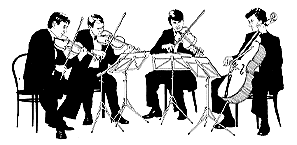Ernest Chausson (1855-1899) wrote many short stories and considered music as a career, but instead he followed his father's wishes and obtained a doctorate in law. Only after this had been accomplished did he decide to pursue a career in music. His "Poeme," Op. 25 for violin and orchestra (1896), is based on a short story by the Russian writer Turgenev. Its somewhat heavy harmonic style comes from the highly perfumed world of post-Romanticism, which he later abandoned for the more classical world of lightness and pure forms.
Arthur Honegger (1892-1955) is often thought of as a French composer, however, he was born in Switzerland. He studied at the Paris Conservatoire and later became one of "Les Six" (a new movement among French composers), but he had no real affinity for their aesthetic, being greatly influenced by German music. 
He composed in all genres, including radio and film work, and likewise used all types of musical material. Honegger wrote four symphonies of which Symphony No. 3 "Liturgique" (1945-46), is probably his best.
Maurice Ravel's (1875-1937) genius can be best found in his meticulous craftsmanship, refined harmonic language, and brilliant orchestration. It was after a attending a performance in London given by the famous violinist, Jelly Aranyi, that Ravel decided to write the piece, "Tzigane," rapsodie de concert.
Albert Roussel (1869-1937) was a French composer. In 1894, after traveling the world with the Navy, he resigned his commission and pursued a career as a composer.
In the 1920s he adopted the neo-classical idiom using contrapuntal textures and a much more dissonant language. His very successful ballet, "Bacchus et Ariane," was written in 1930 and followed the story of the classical legend. The "Bacchus et Ariane" Suite No. 2, Op. 43 was extracted from the complete ballet in 1934.
Program for Tuesday, May 11
Conductor Alain Paris,
Violin, Gerard Poulet
A. Honegger: Symphony No. 3 "Liturgique."
M. Ravel: "Tzigane" rhapsody for Violin and Orchestra
E. Chausson: "Poeme" Op. 25 for violin and orchestra
A. Roussel: "Bacchus et Ariane" Suite No. 2, Op. 43
Faculty of Music and Performing Arts Auditorium, 9 p.m.
For more information and reservations, call 266-4382.








